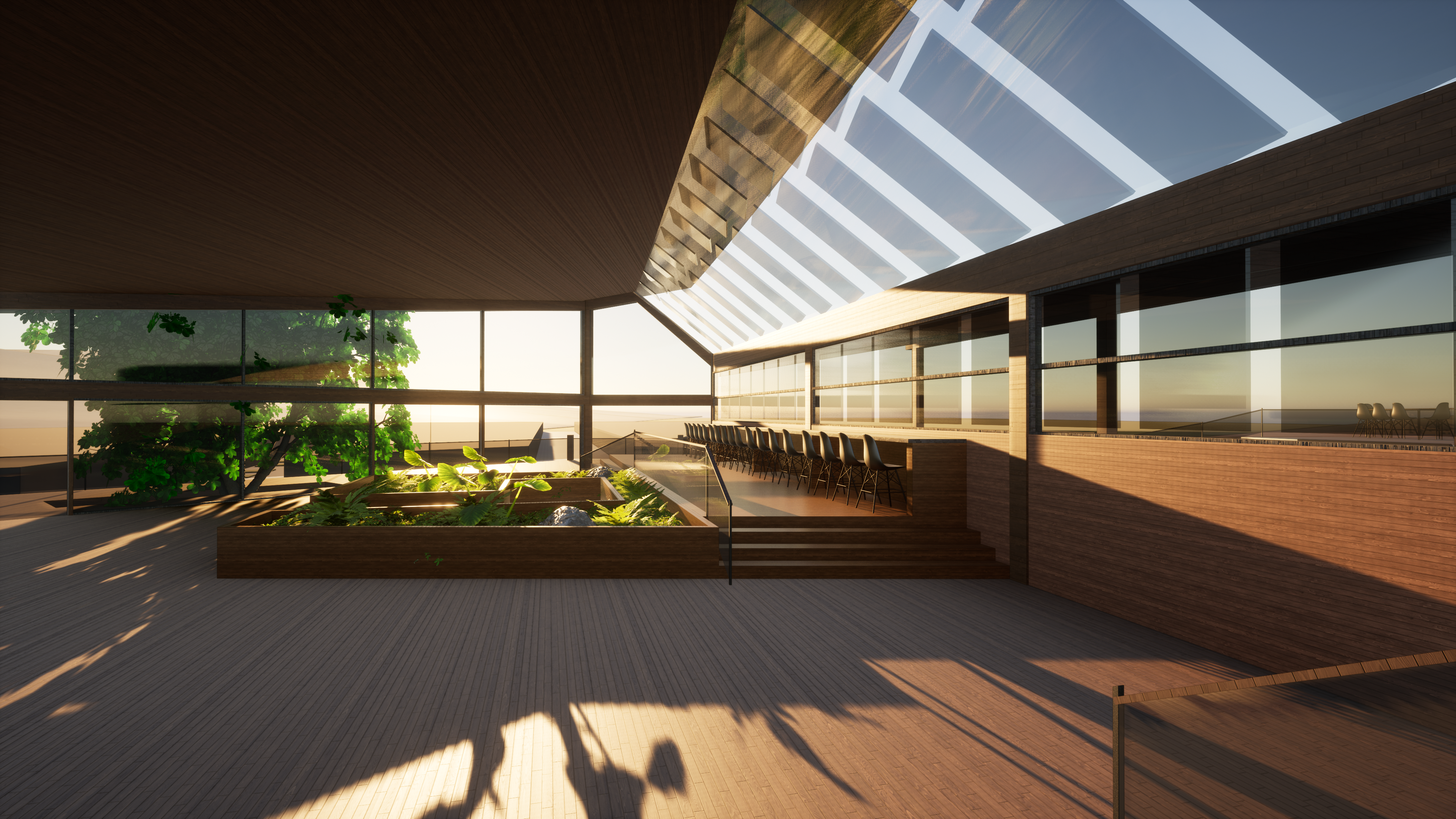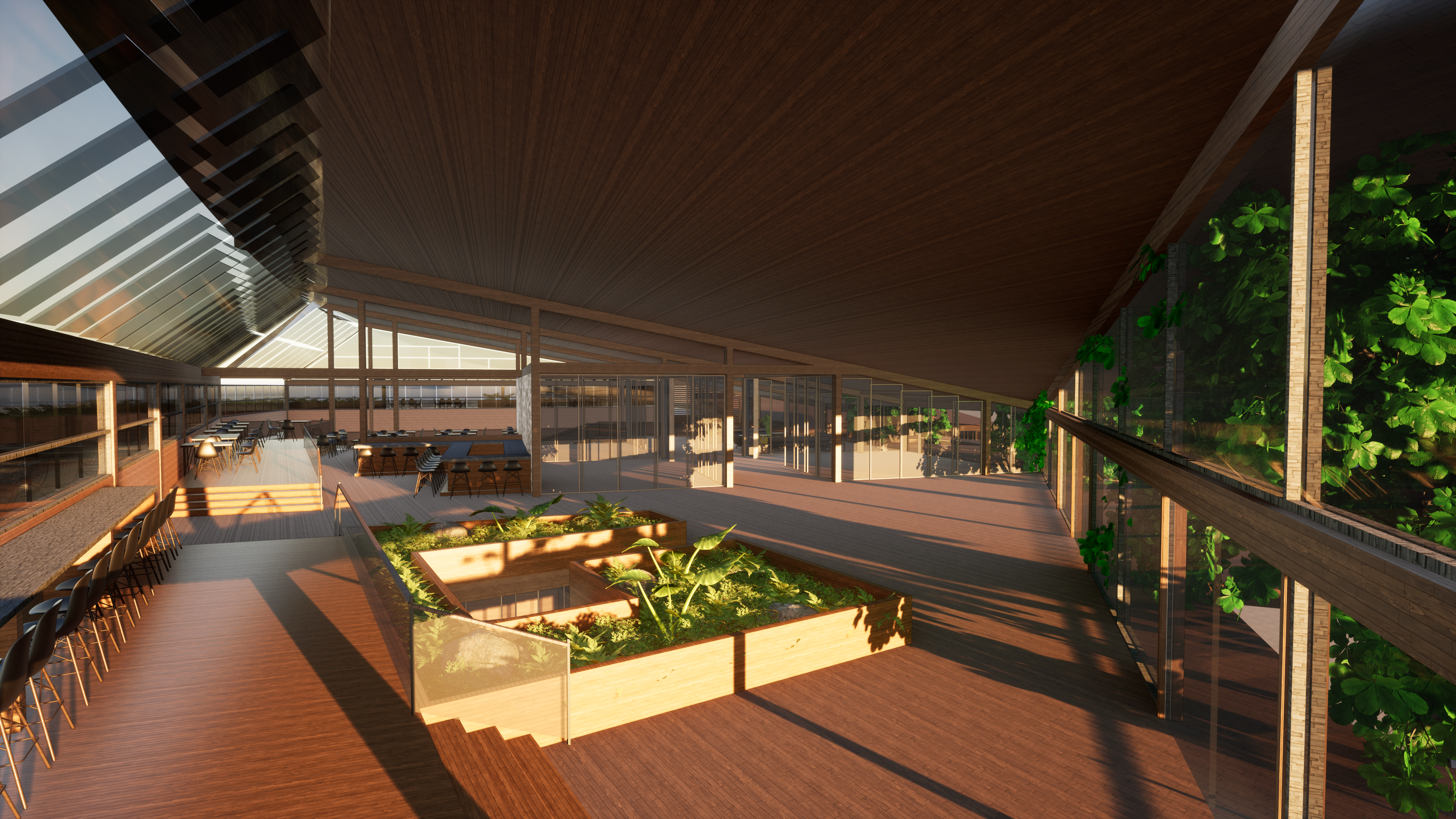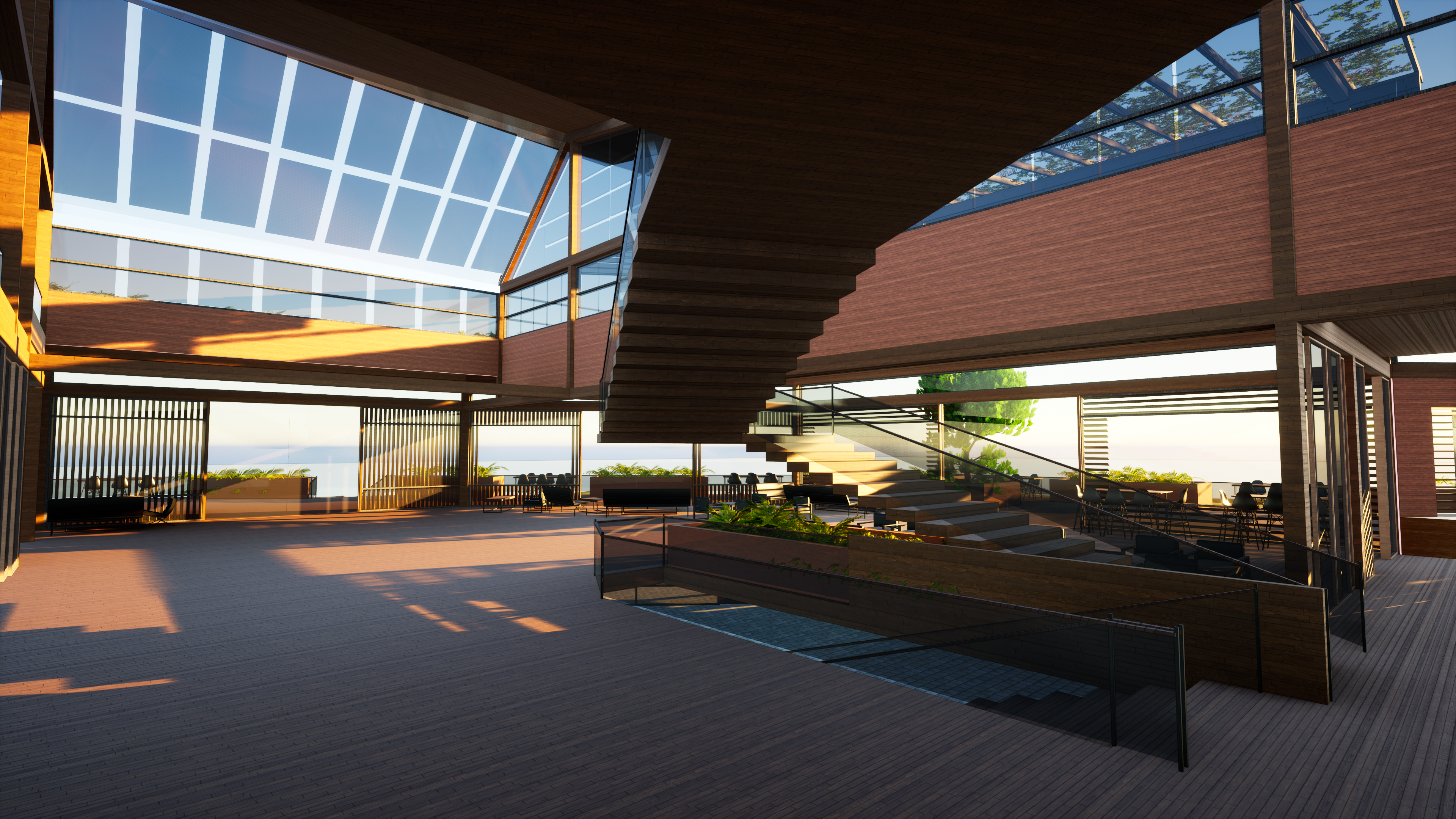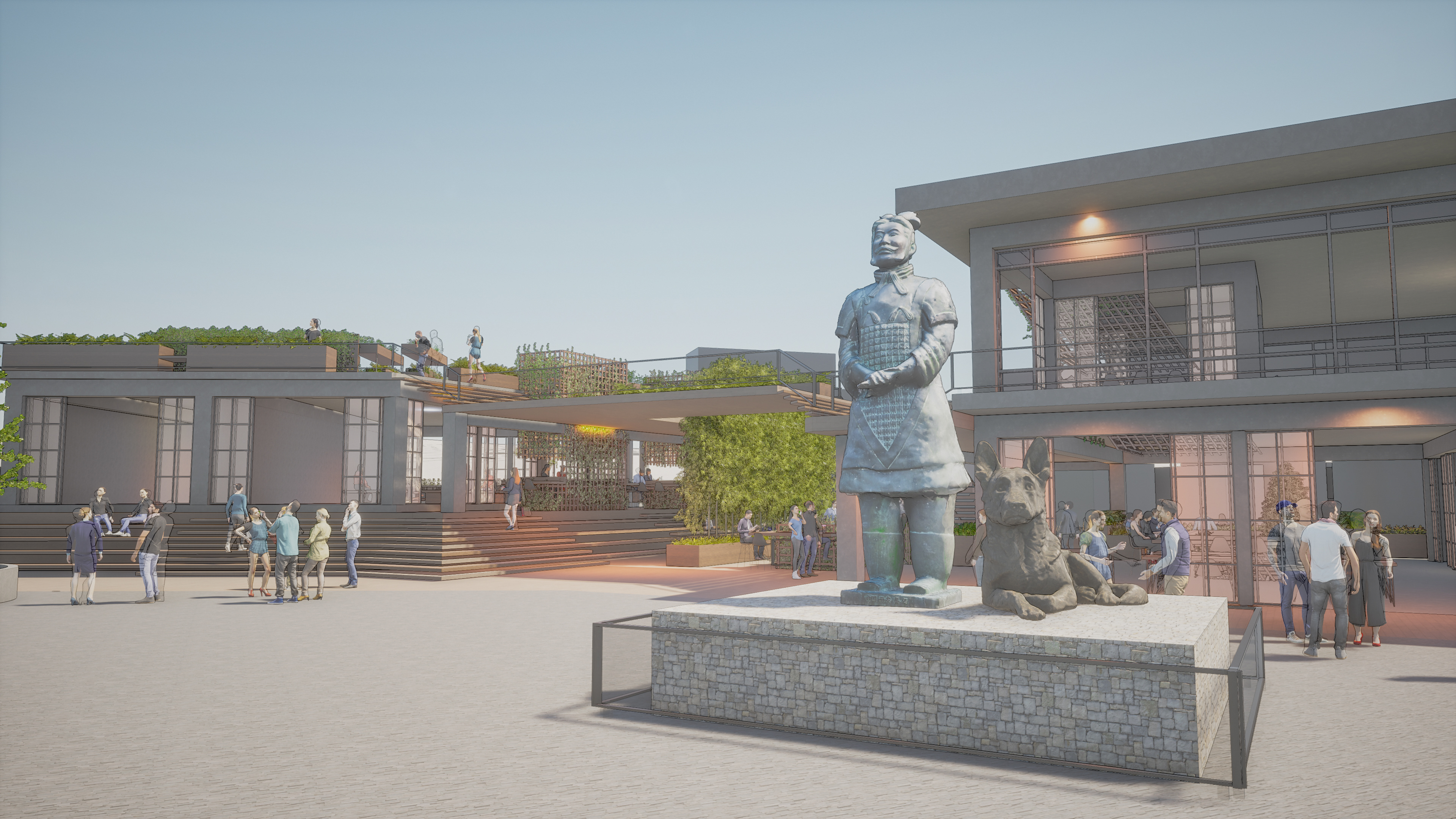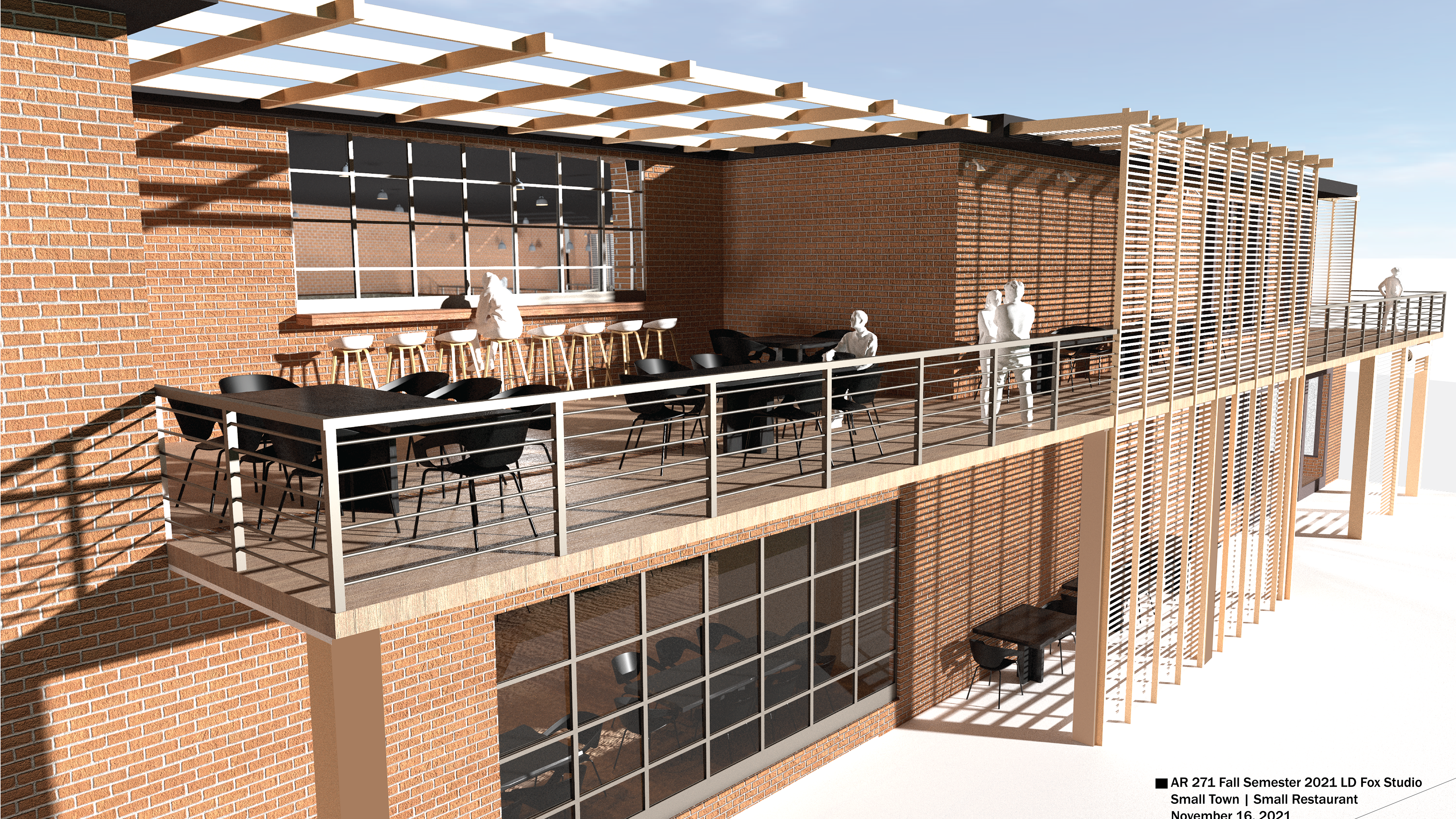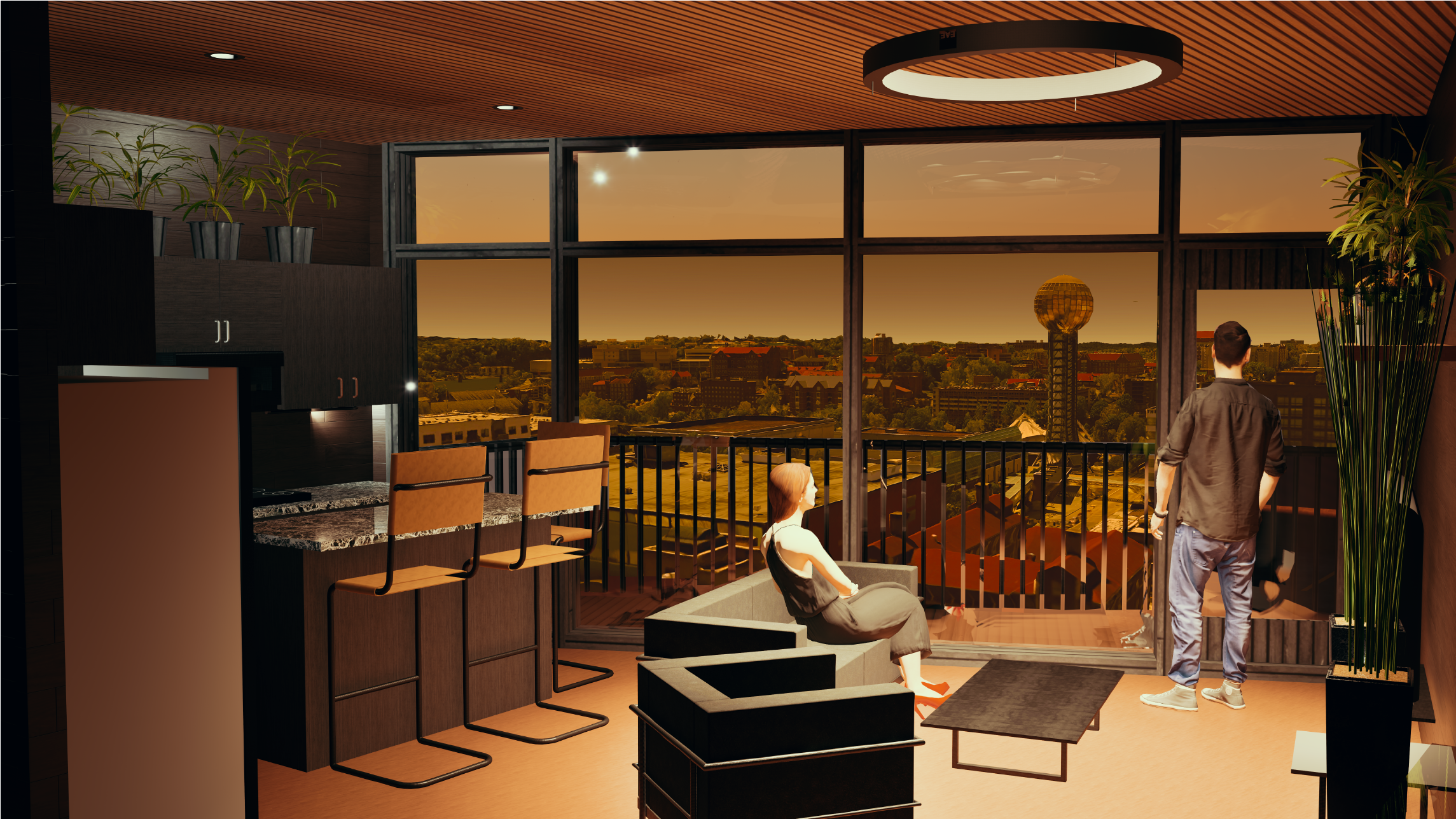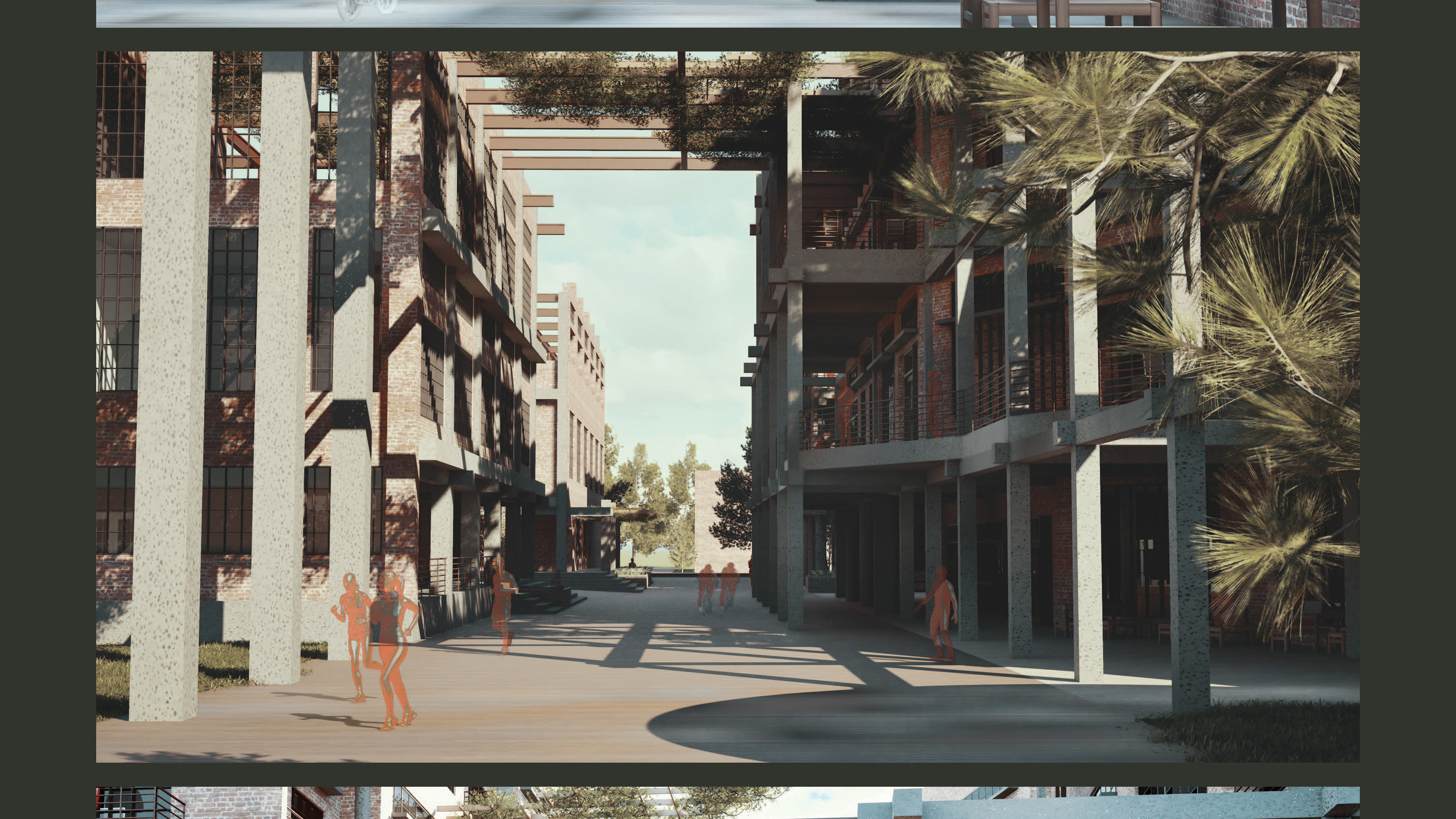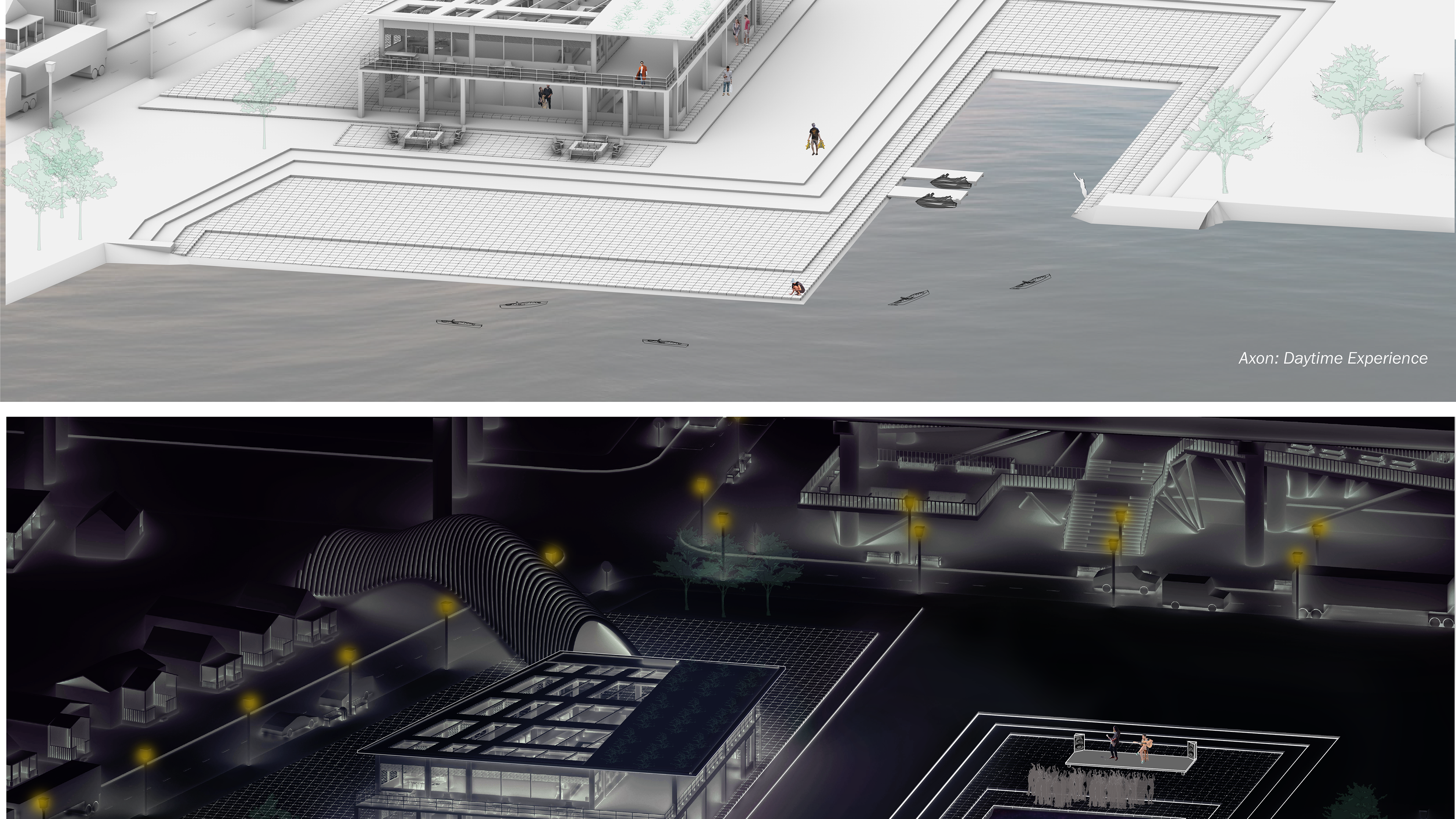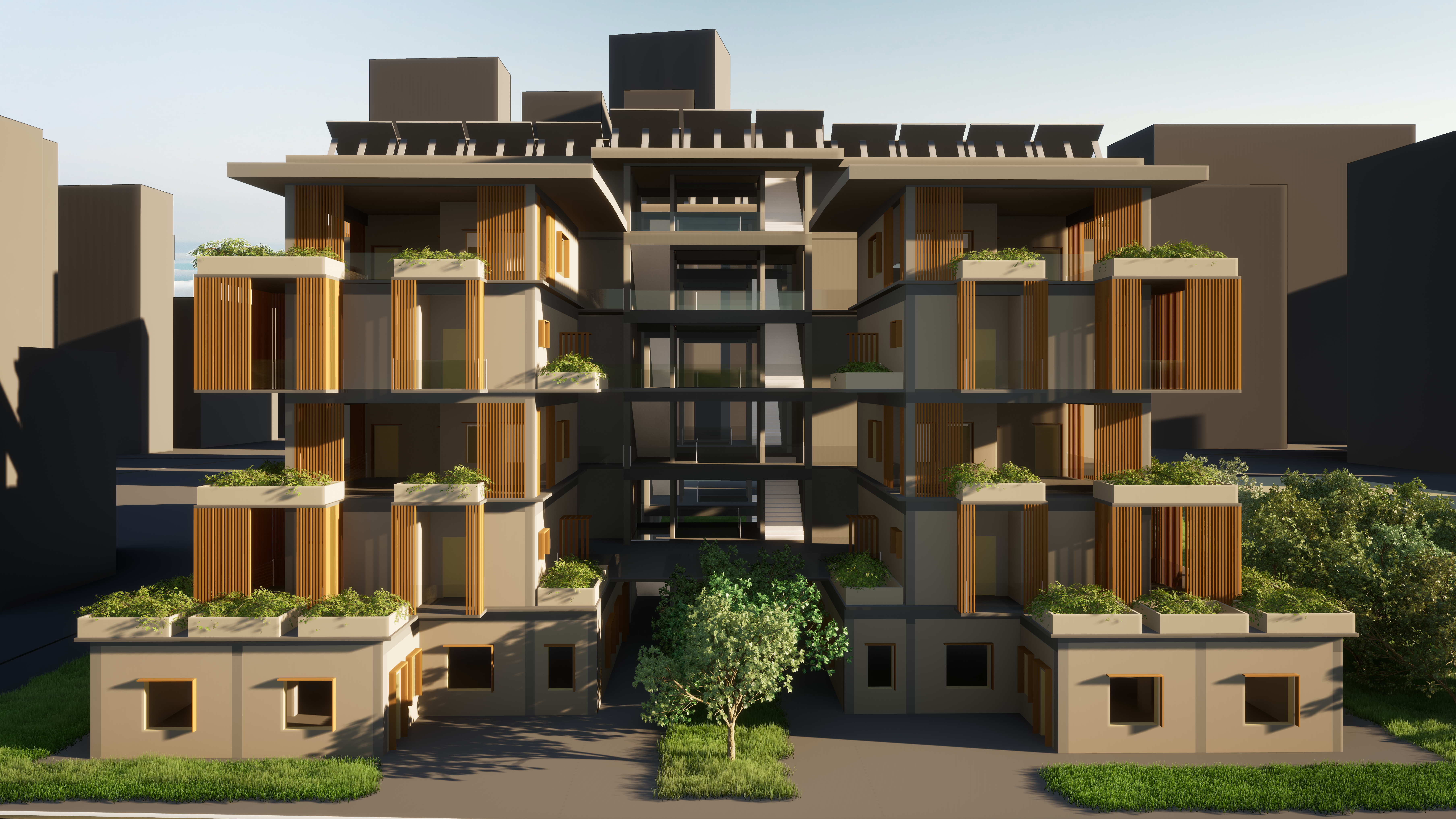The premise of this Studio was Dynamic Worldbuilding. We started off the semester with the question "How might we use systems thinking to develop dynamically designed worlds?"
The studio was split into groups of 3, with one of each focusing on the City scale, Neighborhood scale, or Building scale. I was tasked with designing the building that would sit my partner's neighborhood design, which would then fit into the third partner's city.
Our main objective was to create a place that would aim to foster community and create engagement among its members.
At the Building scale, I was situated on a peninsula, in the center of a public square where many public green-space roads converged. I was focused on creating a place where people could come together and celebrate their culture, while also keeping sustainability in mind.
In answering the stated question, I chose to use a systems thinking approach including the use of the parametric tool Grasshopper and a culmination of its plugins.
I was able to analyze and interpret weather and climate data of the area using Honeybee and Ladybug plugins. I also used Syntactic, where I utilized the inputs from Ladybug and Honeybee, as well as inputs such as occupancies, site access points, and views access.
With this information, Syntactic is able to generate a large number of diagrams displaying space arrangement and layouts for buildings based on the inputs.
I used this diagram as the foundation for my building in regard to the form, layout, and orientation; although many changes were made.
